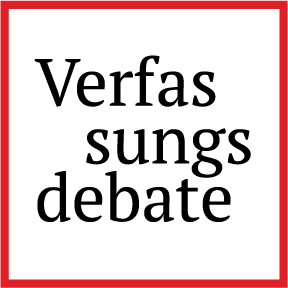The Feasibility of Security Guarantees for Ukraine
The question of possible security guarantees is at the heart of current efforts to end the war against Ukraine. White House special envoy Steve Witkoff stated on 17 August 2025 that “the United States and other European nations could effectively offer Article 5-like language to cover a security guarantee,” which would serve as a trade-off for Russia’s insistence that Ukraine should not be able to join NATO. This has brought the term “Article 5-like protection” into focus. The feasibility of such a guarantee appears impossible given legal and practical obstacles. Russia is demanding untenable concessions from Ukraine in exchange for its consent. The prospect of a credible deterrent is also missing, which is why the entire process appears to be the Russians playing for time.
Calls for Western politicians to develop security mechanisms and consider strategies to assist Ukraine in managing future relations with Russia short of NATO membership have been made repeatedly since Russia’s invasion of Ukraine in 2022. However, as the USA itself has consistently called into question the value of Article 5 of the NATO Treaty, it seems virtually impossible to enshrine an effective security guarantee in international law at this point in time. Any arrangement similar to Article 5 would simply not be sufficiently robust enough to serve the purpose of regulating the issues at hand.
Apart from this: There is no legal solution to a factual problem. The assumption that European troops on the ground could make a decisive difference to the conflict or form a viable European peacekeeping force is doubtful. The mandate and command structure of such a mission would have to be addressed, besides the questionable factual feasibility of this endeavour. The current debate on this may also be completely pointless and only a naive response to Russia’s play for time.
The problem with article 5
As avoiding immediate military confrontation with Russia is a top priority for NATO member states, Ukrainian NATO membership is currently simply not an option. Article 5 of the NATO Treaty states the members agree “that an armed attack against one or more of them in Europe or North America shall be considered an attack against them all.” As Ukraine is currently subject to an armed attack by Russia, accession to NATO membership would draw NATO members into the state of armed conflict with Russia that they intend to avoid. Suggestions to limit the territorial scope of such a guarantee to currently unoccupied western regions of Ukraine are flawed as long as an armed conflict exists in other parts. Given the possibility of Russian attacks on the area covered by the mutual assistance clause in western Ukraine, like the repeated attacks on Lviv, there is an inherent danger of triggering Article 5, thus establishing a state of armed conflict. This obstacle to NATO accession would ultimately also apply to any comparable arrangement.
Article 5 further states that each member will take “such action as it deems necessary, including the use of armed force.” Its non-committal nature means that there is no legally binding commitment to use force in the case of an attack. To be effective as a security guarantee, Article 5, or any guarantee like it, must therefore be backed up by political will and a highly action-oriented command structure. Building such a formidable command structure took NATO decades. It cannot be easily duplicated. Furthermore, doubts remain regarding the required political will. In the U.S., the idea of a “dormant NATO”, with the aim of shifting the security burden from the US to Europe, has gained popularity. In line with this, President Trump cast doubt on the Article 5 commitment on the way to the NATO summit in June 2025, pointing out that there were “numerous definitions of Article 5.” This leaves room for an approach to Article 5 whereby a member state can refuse to lend the sort of military support necessary to render security guarantees meaningful. Against this backdrop, it is doubtful that any article 5 like guarantee would not equally suffer from a lack of political commitment.
Ukraine has already had to learn the painful lesson that mere assurances are not enough. The Budapest Memorandum of 1994, in which Ukraine gave up its nuclear weapons, does not constitute a treaty under international law but merely a statement of political commitments. Although the Russian Federation reaffirmed in it the obligation “to refrain from the threat or use of force against the territorial integrity or political independence of Ukraine” (No. 2), it attacked and annexed Crimea in 2014. The other signatories (UK, USA, and France) merely reacted by imposing economic sanctions.
The impossibility of Russian consent
Currently, with the eagerness and insistence of the US President on “making a deal,” any possible provision of security guarantees is subject to Russian consent. Yet this seems unattainable short of what should be seen as factually and legally untenable concessions from Ukraine. In 2005, Russian President Putin called the Soviet Union’s collapse “the greatest geopolitical catastrophe of the [20th] century.” There is no reason to believe that this conviction has changed in the slightest. The sweatshirt Foreign Minister Lavrov wore at the meeting in Alaska on 15 August 2025, bearing the abbreviation for the Soviet Union (CCCP), which also included Ukraine, should have removed any remaining doubts about this. It is thus most unlikely that a Russia under Putin is willing to accept an arrangement that would constitute, in all but name, an extension of NATO to Ukrainian territory.
In exchange for Russian consent, it requested Ukraine to abandon its quest to join NATO and the EU and to make territorial concessions. Yet, this ignores, for one, that several provisions (Articles 85 (5), 102, and 116) of the Ukrainian Constitution enshrine an obligation for the legislature, president, and government to pursue NATO accession and prescribe EU membership as a goal. Abandoning either of these goals would require changing the Ukrainian Constitution. To render Ukrainian membership in an international organization dependent on Russian approval necessarily implies restrictions on Ukrainian sovereignty as it pertains to alliance membership and territorial sovereignty.
Moreover, legally binding territorial concessions to Russia would in effect condone an act of annexation—the forced integration of territory previously under foreign sovereignty—which is illegal according to the Stimson Doctrine of 1932. One potential solution is to give up de facto temporary control over territory without acknowledging this control de iure. There are plenty of cases in the history of international law when territorial control was tacitly accepted without abandoning the legal claim to sovereignty. In line with this, prior to the NATO-Putin summit, NATO Secretary General Rutte made it clear that NATO would “never accept … in a legal sense” Russian control over parts of Ukraine. He gave the “dormant” state of the Baltic states between 1940 and 1990 as an example for such a case of de facto but not de jure acceptance. A particularly obvious comparison is the GDR (which ultimately can be qualified as a failed attempt at secession), as West Germany never legally accepted its sovereignty but had to deal with its existence. Without accepting a territorial concession legally, Ukraine would be prevented from exercising its territorial sovereignty over Russian-occupied eastern parts for the time being. Of course, this would still entail gruesome consequences for the Ukrainian population beyond any line of demarcation.
Any such provisional border demarcation cannot place Ukraine in a militarily untenable position. As such, it would have to refer to the current front line and not demand any strategically fatal concessions from Ukraine. In particular, Russia cannot be allowed to achieve through negotiations what it has not managed to achieve in three years of war: taking the approximately 50-kilometer-long, heavily fortified line between Sloviansk-Kramatorsk-Drushkivka-Kostiantynivka. Behind this line lies a largely open area that is difficult to defend which would enable Russian troops to advance quickly. Russia currently controls almost the entire Luhansk region and about three-quarters of Donetsk. A forced cession of the entire Donbas in eastern Ukraine is therefore out of the question as a new demarcation line.
The lack of a ceasefire
Another obstacle to ending hostilities is the unlikelihood of a ceasefire and the absence of a credible deterrent. The mere agreement on a de facto border line is not enough; it requires safeguarding. Demarcation lines along borders that are not internationally recognized have existed on the Korean peninsula since 1950 and on Cyprus since 1974. However, in these conflicts both sides concluded that it was impossible for either side to achieve military superiority in the near future. These conflicts were settled, for the time being, by UN-involved armistice agreements and through peacekeeping forces on the line of ceasefire. In European countries like Germany, mock debates are already taking place about whether they should participate with troops in monitoring a ceasefire. Yet this ignores that there is currently no likelihood of such a ceasefire. Russian violations of international humanitarian law continue unabated and Russian Foreign Minister Lavrov statement that the presence of European troops in Ukraine would be “absolutely unacceptable” sheds further doubt on the possibility of a ceasefire.
No credible deterrent force
Any kind of security guarantee must be backed up with a credible deterrent; one that is currently missing. During the Cold War promises of collective action went along with a demonstrated willingness to follow through on them: Over 300,000 US troops in Europe were willing and able to achieve a substantial delay of any Soviet attack because they were not a merely symbolic force. The picture is radically different today. Over the course of NATO’s expansion, little planning went into defending against a Russian attack. This undermined the credibility of assurances under Article 5. A RAND study concluded in 2016 that Russia could overrun all three Baltic states within 72 hours. NATO’s “enhanced forward presence” of fewer than 5,000 troops in the Baltic states and Poland, established in 2016, constituted nothing more than a “trip-wire force.” Building up a real deterrent Baltic NATO presence, including a German brigade in Lithuania, will take some time.
Between 100,000 and 150,000 troops, supported by large-scale air and maritime components, are estimated to be necessary to credibly support Ukraine in defending itself against any Russian incursions. As deployments within an existing framework (UN, EU, NATO, OSCE) are unlikely, a sui generis model for Ukraine would be required. There is some precedent for an international peacekeeping organization outside the UN system: The Multinational Observer Force (MFO), overseeing the terms of the peace treaty between Egypt and Israel, was created in 1981 by Egypt, Israel, and the United States, as the USSR had indicated it would veto an attempt to do so by a Security Council resolution. However, its mission is defined as largely observational in nature. It therefore lacks a robust mandate that allows for the enforcement of the treaty’s terms, e.g., by authorizing peacekeepers to use military force beyond self-defence, which would be required for a mission in Ukraine.
Doubtful adherence and enforceability
Ultimately, the basic idea of enshrining legally binding security guarantees to facilitate an end to the conflict has one further and arguably fatal flaw: Russia is currently constantly violating international law, and it is implausible to assume this would be any different in the case of a Western security guarantee unless it is backed up factually by a credible deterrent. Negotiations on this go around in circles; announcements of deadlines before sanctions alternate with rejections of negotiation offers. In the meantime, the Russian military achieves results by force.
Those old enough to remember the 1990s will know that this has happened before: the dissolution of Yugoslavia provides ample illustrations for the relation between force and diplomacy. Repeated ceasefires were only used by the aggressor to regroup, rearm, and attack again. The French and German brokered Minsk Agreements of 2014/2015 only gave Russia time to consolidate its control over breakaway territories in Eastern Ukraine before the full-scale attack in 2022. This raises serious doubts that Russia is really interested in substantial negotiations. Instead, it appears to be playing for time. As the Polish Foreign Minister Sikorski pointed out, the problem is not a lack of assurances but the failure to respect them: after all, even though President Putin solemnly ratified the Treaty on the Russian-Ukrainian Border on 22 April 2004, he has continuously failed to adhere to it.
Conclusion
One cannot help but view the current debate as a form of international shadowboxing. Robust security guarantees without European or American troops in Ukraine, to which Russia agrees, are unattainable. It simply exceeds the limits of creative imaginable solutions under international law how this “squaring of the circle” could be achieved. The current US president’s preoccupation with “making a deal” based on his conviction that he is able to do so cannot change this. It is much more important to enable Ukraine to successfully conduct its own defence.
Against the background of the much-quoted dictum by the first NATO Secretary General, Lord Hastings Ismay (1887-1965), on the purpose of NATO, “To keep the Americans in, the Russians out, and the Germans down,” discussing security guarantees for Ukraine is not really about keeping “the Russians out” but keeping “the Americans in.” Though it has been labelled “the return of courtly politics” and a European attempt “to please a mad king,” a comprehensive meeting of the US President with numerous European Heads of Government, NATO, and the EU signifies anything but a pivot to Asia, besides the strong American urge to decouple from European security structures. Compared to the offensive America-First Isolationism at the beginning of 2025, one realization seems to sink in: The USA cannot escape its global responsibility.



